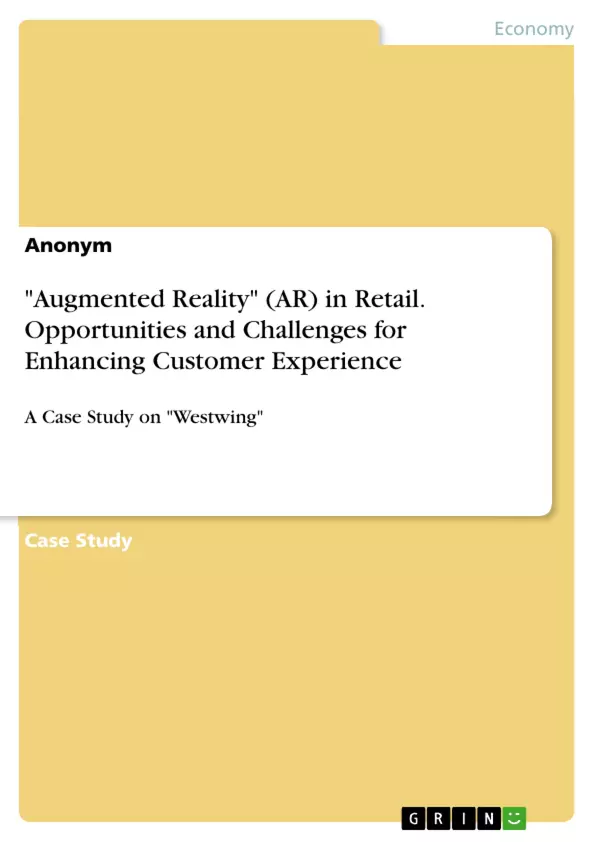This text discusses the potential benefits and challenges of using augmented reality (AR) in the retail industry to enhance customer experience, increase sales, and gain a competitive advantage. The paper analyzes a Journal of Marketing article that examines the impact of AR on sales in online shopping and proposes a theoretical implementation of AR for the German home and living brand, Westwing, using their AR program, Atelier by Westwing. The article concludes that AR has promising opportunities for businesses that can be realized through effective implementation, and Westwing's use of AR can result in cost savings, decreased return rates, and a personalized customer experience.
Table of Contents
- Introduction
- Part I: Analysis and critique of the thinking behind authors' work
- Challenges of AR in Retail
- Expenses
- AR limitations
- Data protection concerns
- Online sales are cannibalized by local retail
- Opportunities of AR in Retail
- Product Fit Uncertainty
- AR can enhance the post-purchase experience
- Interaction at touchpoints
- Generating traffic to brick-and-mortar stores
- Challenges of AR in Retail
- Part II: Application of AR on Westwing
- About the brand Westwing
- Westwings' market positioning
- Strategy of AR conceptualization on Westwing
- Possible implications for Westwing if AR were to be applied
- Conclusion
Objectives and Key Themes
This paper examines the application of augmented reality (AR) in retail, analyzing its potential and challenges based on the Journal of Marketing article "Augmented Reality in Retail and Its Impact on Sales." The paper then applies this knowledge to Westwing, a German e-commerce company specializing in home décor, developing a strategy for implementing AR through an app called Atelier by Westwing.
- The opportunities and challenges of augmented reality in retail
- The impact of AR on sales and customer experience
- The application of AR in the home and living industry
- The strategic implementation of AR for Westwing
- The development of a unique AR-based app for Westwing called Atelier by Westwing
Chapter Summaries
The introduction discusses the increasing customer demand for unique shopping experiences and the potential of AR to improve efficiency and deliver a seamless experience for consumers. Part I delves into the challenges of AR in retail, focusing on expenses, limitations, data protection concerns, and the potential cannibalization of online sales by local retailers. It then explores the opportunities of AR, highlighting its ability to improve product fit uncertainty, enhance the post-purchase experience, foster interaction at touchpoints, and generate traffic to brick-and-mortar stores.
Part II focuses on Westwing, analyzing its market positioning and outlining a strategy for implementing AR. This part describes Atelier by Westwing, an AR-based app designed to create personalized interior design concepts using AI. The app recognizes room dimensions, utilizes style questionnaires, and generates 3D room visualizations with furniture and décor suggestions.
Keywords
This paper explores augmented reality (AR), its application in retail, and its potential impact on sales and customer experience. Key topics include AR limitations, data protection concerns, online sales cannibalization, product fit uncertainty, the post-purchase experience, and AR-driven interactions with customers. The paper also analyzes the market position of Westwing, an e-commerce platform specializing in home and living, and proposes a strategy for implementing AR through Atelier by Westwing, a unique AR app leveraging AI to create personalized interior design concepts.
- Arbeit zitieren
- Anonym (Autor:in), 2022, "Augmented Reality" (AR) in Retail. Opportunities and Challenges for Enhancing Customer Experience, München, GRIN Verlag, https://www.grin.com/document/1348580



